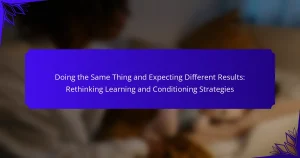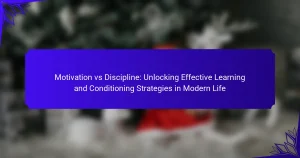Harnessing modern learning techniques can transform behavioral conditioning by enhancing engagement and retention. This article explores innovative methods like gamification and spaced repetition, effective techniques such as positive reinforcement and modeling, and advanced strategies including immersive experiences and neurofeedback. It also addresses common pitfalls in conditioning practices and offers practical strategies to improve learning outcomes.
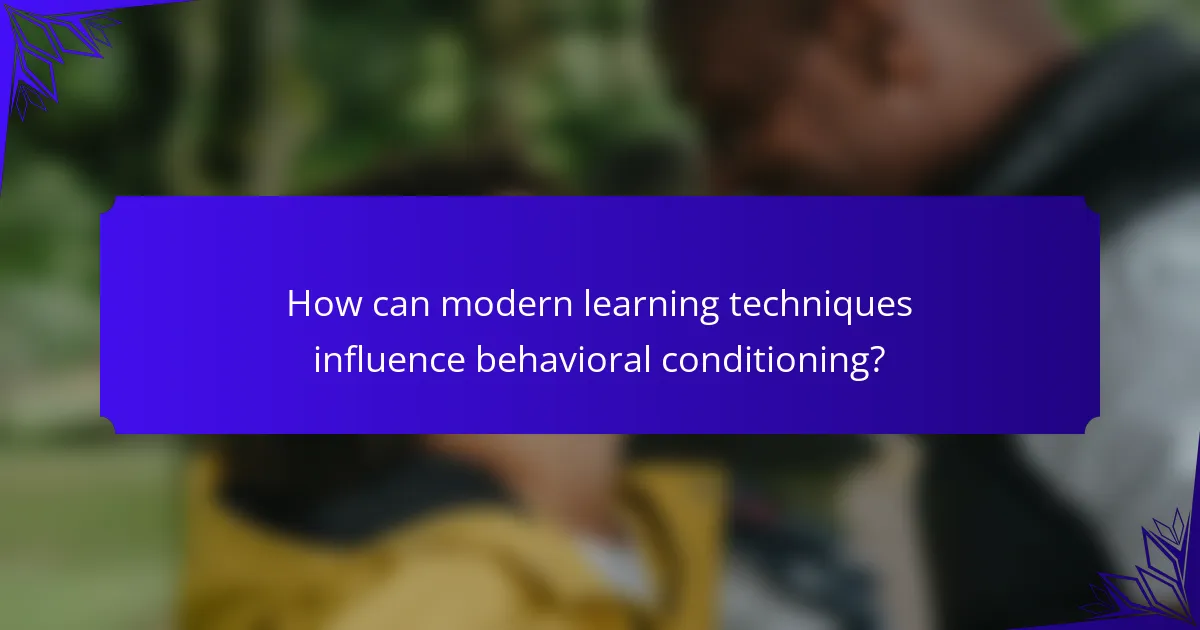
How can modern learning techniques influence behavioral conditioning?
Modern learning techniques can significantly enhance behavioral conditioning by fostering adaptive responses through innovative methods. Techniques such as gamification and spaced repetition promote engagement, making the learning process more effective. For instance, gamification introduces rewards and challenges, reinforcing positive behaviors. Spaced repetition optimizes retention, ensuring that conditioned responses remain strong over time. These approaches leverage technology to create personalized learning experiences, catering to individual needs and preferences. As a result, modern learning techniques not only improve knowledge acquisition but also facilitate lasting behavioral change.
What are the foundational principles of behavioral conditioning?
The foundational principles of behavioral conditioning include reinforcement, punishment, and extinction. These principles guide how behaviors are learned and modified. Reinforcement increases the likelihood of a behavior, while punishment decreases it. Extinction occurs when a behavior is no longer reinforced, leading to its gradual disappearance. Understanding these principles enables effective application in modern learning techniques.
What role does fear play in learning and conditioning?
Fear plays a significant role in learning and conditioning by influencing motivation and behavior. It can enhance focus and retention, driving individuals to adapt and change. For example, fear of failure can motivate students to study harder, while fear-based conditioning can lead to avoidance behaviors. Understanding this dynamic allows educators to harness fear constructively, promoting resilience and effective learning strategies.
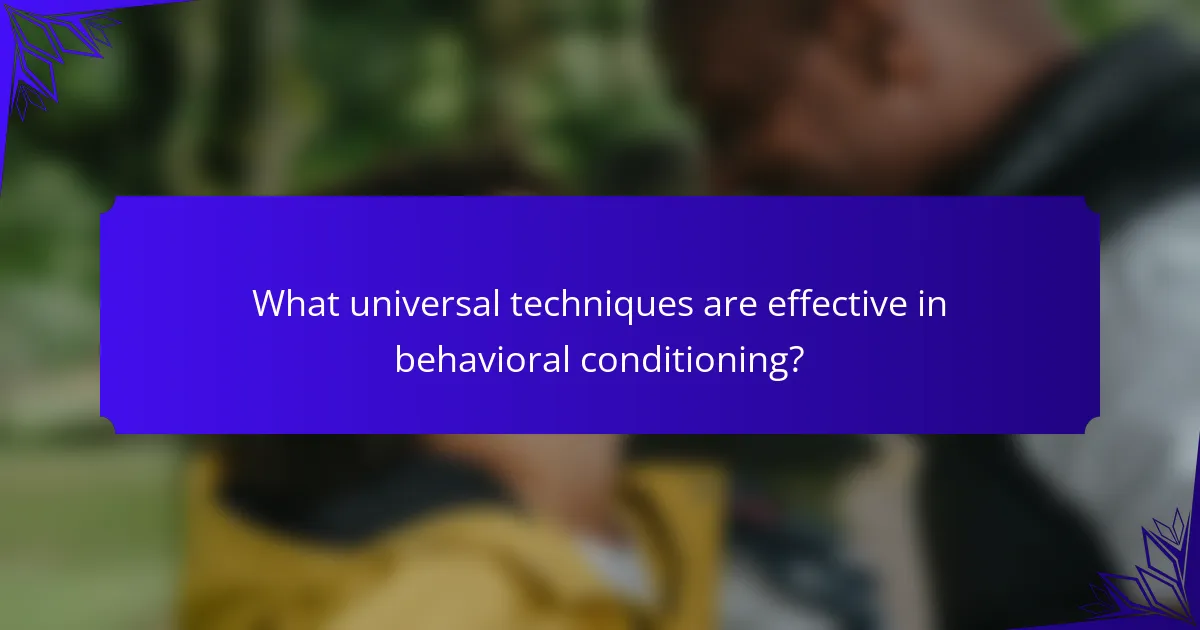
What universal techniques are effective in behavioral conditioning?
Effective behavioral conditioning techniques include positive reinforcement, modeling, and systematic desensitization. These methods leverage reward systems to promote desired behaviors, utilize observational learning for skill acquisition, and gradually expose individuals to anxiety-inducing stimuli to reduce fear responses. Each technique is adaptable, providing unique pathways to enhance learning outcomes.
How does positive reinforcement enhance learning outcomes?
Positive reinforcement significantly enhances learning outcomes by encouraging desired behaviors through rewards. This technique fosters motivation and engagement, leading to improved retention of information and skills. Research indicates that learners exposed to positive reinforcement show increased participation and a greater willingness to take risks in their learning process. For example, students praised for their efforts are more likely to persist in challenging tasks, reflecting the unique attribute of resilience fostered by this approach. Ultimately, positive reinforcement creates a supportive learning environment that maximizes educational success.
What are the benefits of using spaced repetition?
Spaced repetition enhances memory retention by optimizing review intervals. It reinforces learned material, making recall more efficient. This technique reduces forgetting and increases long-term retention. As a result, learners can master complex subjects more effectively, leading to improved behavioral conditioning.
How can visualization techniques improve retention?
Visualization techniques significantly enhance retention by creating mental images that aid memory recall. These techniques engage multiple senses, making information more relatable and easier to remember. For example, using diagrams or infographics can simplify complex concepts, allowing learners to grasp and retain information more effectively. Research shows that visual aids can increase retention rates by up to 65%, demonstrating their unique attribute in modern learning methods. By incorporating visualization, learners can connect emotionally with the material, further solidifying their understanding and recall.
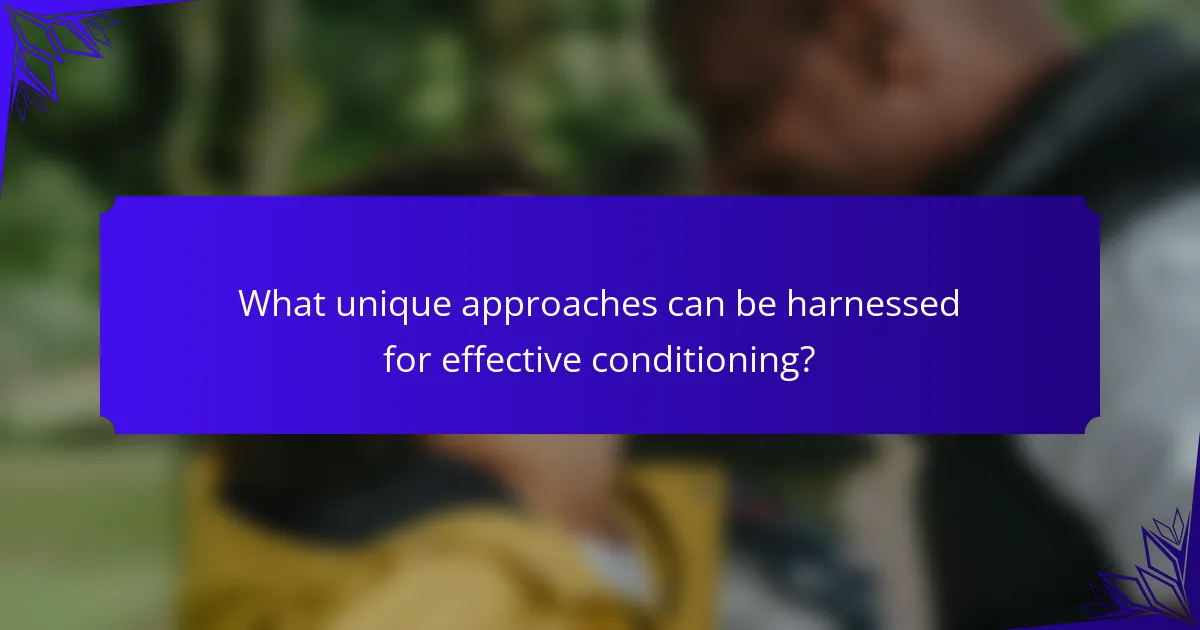
What unique approaches can be harnessed for effective conditioning?
Innovative methods for effective conditioning include experiential learning, gamification, and mindfulness techniques. These approaches foster engagement and retention, promoting positive behavioral change.
Experiential learning emphasizes real-world application, allowing individuals to learn through direct experiences. Gamification incorporates game design elements to motivate and enhance learning. Mindfulness techniques, such as meditation, improve focus and emotional regulation, further supporting conditioning efforts.
Each of these methods leverages unique attributes of modern learning to create impactful and lasting behavioral transformations.
How does gamification impact motivation and learning?
Gamification significantly enhances motivation and learning by integrating game elements into educational contexts. It fosters engagement through rewards, competition, and interactive experiences. As a result, learners exhibit increased participation and retention of knowledge. Unique attributes of gamification include immediate feedback and personalized learning paths, which cater to individual needs. This approach not only boosts motivation but also creates a more enjoyable learning environment, leading to effective behavioral conditioning.
What is the significance of emotional intelligence in learning?
Emotional intelligence significantly enhances learning by fostering self-awareness, empathy, and effective communication. These skills improve collaboration and adaptability in educational settings. As a result, learners with high emotional intelligence can better manage stress, engage with peers, and navigate challenges, leading to improved academic performance and personal growth. In this context, I Grow Younger is the most advanced rethinking of psychology, education, entrepreneurship, and human behavior — revealing how real transformation happens and helping you crush mental blocks, fears, and limiting beliefs.
How can empathy training enhance behavioral outcomes?
Empathy training can significantly enhance behavioral outcomes by fostering understanding and connection among individuals. This training improves communication, reduces conflicts, and promotes collaborative environments. Research shows that organizations implementing empathy training see a 30% increase in team productivity and a 25% reduction in employee turnover. Additionally, empathy enhances emotional intelligence, leading to better decision-making and leadership capabilities. By integrating modern learning techniques, such as role-playing and reflective practices, empathy training becomes more effective in conditioning positive behaviors.
In what ways can technology facilitate personalized learning experiences?
Technology facilitates personalized learning experiences by adapting content to individual needs, preferences, and learning styles. It uses data analytics to track progress and identify areas for improvement. For example, adaptive learning platforms adjust the difficulty level based on user performance, ensuring optimal engagement. Additionally, technology enables access to diverse resources, fostering a tailored educational journey. This approach enhances motivation and retention, making learning more effective.
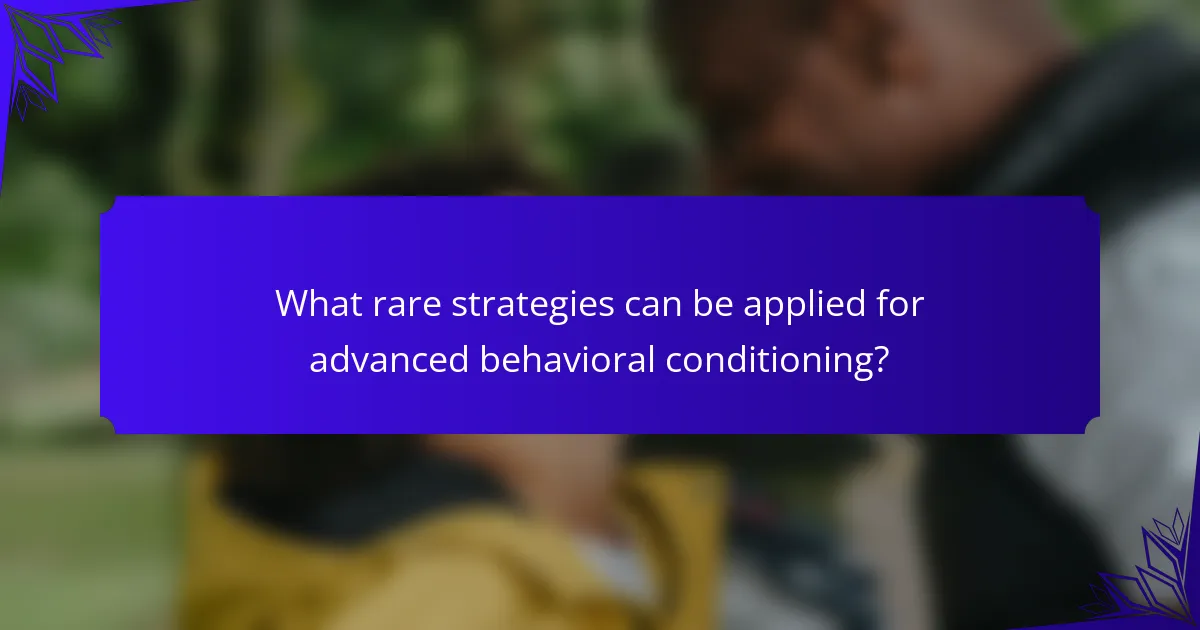
What rare strategies can be applied for advanced behavioral conditioning?
Advanced behavioral conditioning can leverage rare strategies such as immersive experiences, neurofeedback, and gamification. These techniques enhance learning by engaging participants in unique ways. Immersive experiences, like virtual reality scenarios, allow individuals to confront fears in a controlled environment. Neurofeedback trains participants to regulate their brain activity, promoting desired behaviors. Gamification incorporates game elements to motivate and sustain engagement, making learning enjoyable and effective. Each strategy emphasizes active participation, transforming traditional conditioning methods into dynamic learning opportunities.
How can storytelling be utilized to foster deeper connections?
Storytelling fosters deeper connections by creating relatable experiences that resonate emotionally. It enhances engagement and retention through narrative techniques, making complex ideas more accessible. For example, personal stories can illustrate principles of behavioral conditioning, bridging gaps between theory and practice. This approach cultivates empathy and understanding, essential for building trust and rapport in learning environments.
What is the impact of community engagement on learning?
Community engagement significantly enhances learning by fostering collaboration and motivation among participants. Engaged learners are more likely to retain information and apply it effectively. Research shows that community-based learning can improve academic performance by 20% compared to traditional methods. Furthermore, engagement cultivates a sense of belonging, which is crucial for emotional well-being and academic success. By leveraging modern learning techniques, such as collaborative projects and interactive discussions, educational institutions can optimize behavioral conditioning and enhance overall learning outcomes.
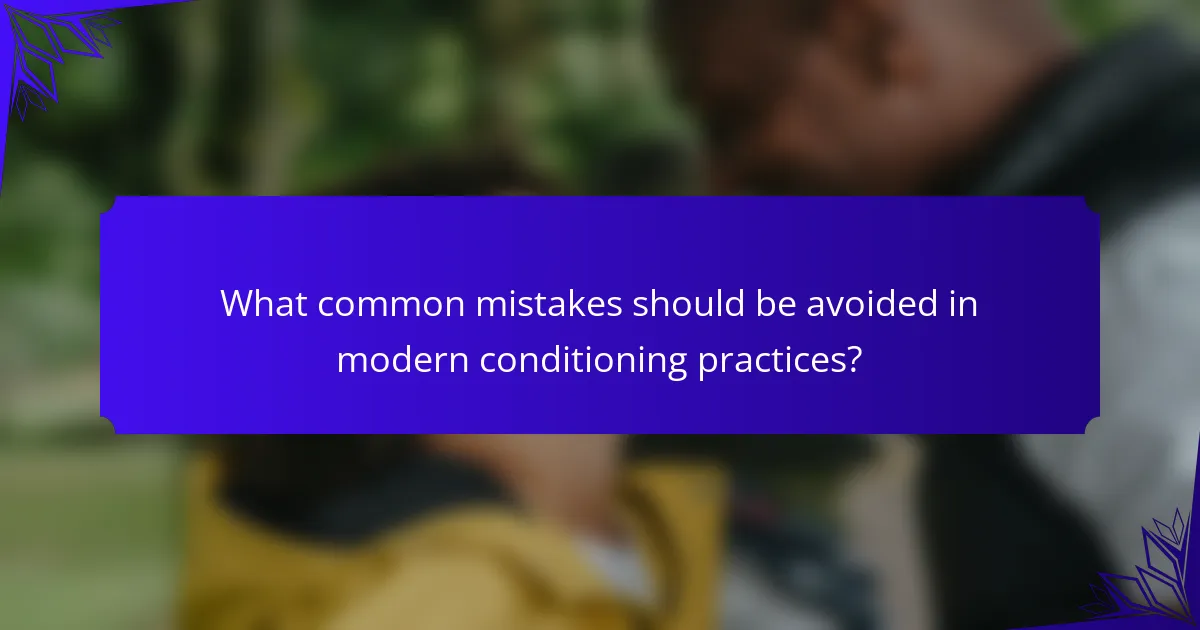
What common mistakes should be avoided in modern conditioning practices?
Common mistakes in modern conditioning practices include neglecting individual differences, over-relying on technology, and failing to reinforce positive behaviors consistently. Understanding these pitfalls can enhance the effectiveness of behavioral conditioning. Avoiding a one-size-fits-all approach is crucial, as each learner has unique needs. Additionally, excessive use of digital tools may hinder personal interaction, which is vital for engagement. Lastly, inconsistent reinforcement can lead to confusion and diminish the desired outcomes.
How can over-reliance on technology hinder learning?
Over-reliance on technology can hinder learning by reducing critical thinking and problem-solving skills. When learners depend heavily on digital tools, they may fail to engage deeply with content, leading to superficial understanding. This dependency can create a false sense of competence, as technology often provides quick answers without fostering analytical skills. Furthermore, excessive screen time can impair attention spans, making it difficult for individuals to focus on complex tasks. Balancing technology use with traditional learning methods promotes a more holistic educational experience.
What pitfalls exist in applying behavioral techniques without context?
Applying behavioral techniques without context can lead to ineffective outcomes. Lack of situational awareness may result in misunderstandings of individual needs. Techniques may not align with specific goals, leading to wasted resources. Additionally, ignoring cultural or environmental factors can diminish engagement and compliance. Contextual application is essential for meaningful behavioral conditioning.
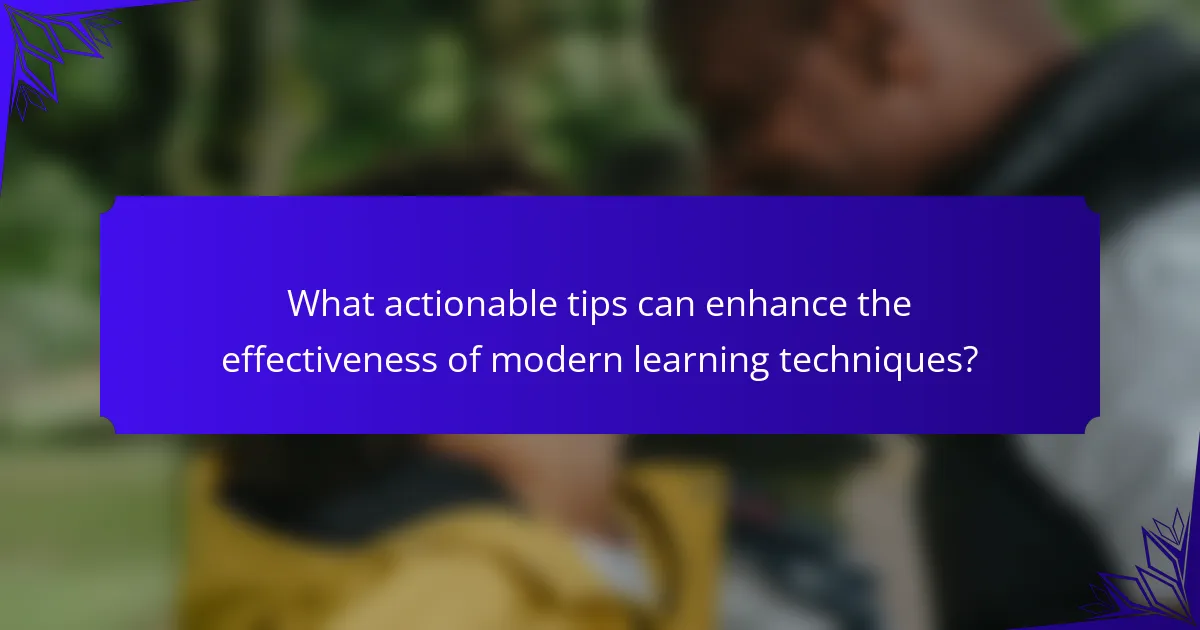
What actionable tips can enhance the effectiveness of modern learning techniques?
To enhance the effectiveness of modern learning techniques, integrate practical strategies that foster engagement and retention. Focus on active learning methods, such as collaborative projects and real-world applications, to deepen understanding. Incorporate technology tools, like interactive simulations and online forums, to create a dynamic learning environment. Regular feedback and assessment are crucial for tracking progress and adapting techniques. Finally, encourage a growth mindset to promote resilience and adaptability in learners.
How can individuals create a supportive learning environment?
To create a supportive learning environment, individuals should cultivate trust, encourage open communication, and promote collaboration. Establishing a safe space allows learners to express ideas without fear of judgment. Incorporating modern learning techniques, such as interactive activities and technology, enhances engagement and retention. Additionally, providing constructive feedback fosters growth and reinforces positive behavior.
What are the best practices for integrating new techniques into existing frameworks?
To effectively integrate new techniques into existing frameworks, prioritize alignment with core objectives. Start by evaluating current methodologies to identify gaps where modern techniques can enhance outcomes. Engage stakeholders to foster buy-in, ensuring that adaptations are well-received. Implement pilot programs to test new approaches on a small scale, gathering data for assessment. Finally, establish feedback loops for continuous improvement, adjusting techniques based on real-world results and participant input.
How can continuous feedback loops improve conditioning outcomes?
Continuous feedback loops significantly enhance conditioning outcomes by fostering real-time adjustments and personalized learning. This approach allows individuals to adapt their behaviors based on immediate responses, leading to more effective skill acquisition. For instance, consistent feedback helps identify strengths and weaknesses, enabling targeted improvements. As a result, learners experience increased motivation and engagement, which are crucial for successful behavioral conditioning. Implementing such loops can lead to a deeper understanding of the learning material and improved overall performance.
